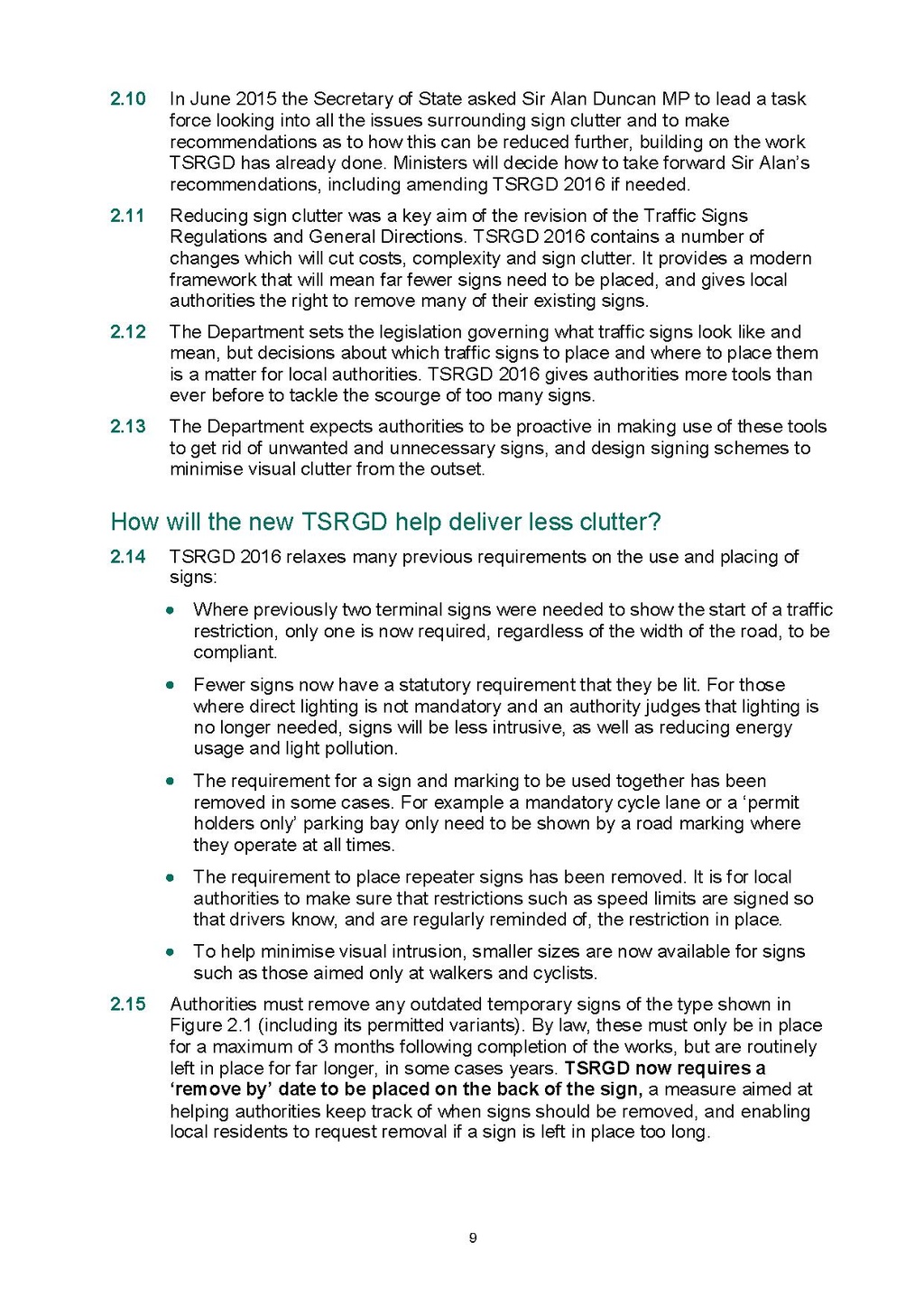This page has been validated.
2.10
In June 2015 the Secretary of State asked Sir Alan Duncan MP to lead a task force looking into all the issues surrounding sign clutter and to make recommendations as to how this can be reduced further, building on the work TSRGD has already done. Ministers will decide how to take forward Sir Alan's recommendations, including amending TSRGD 2016 if needed.
2.11
Reducing sign clutter was a key aim of the revision of the Traffic Signs Regulations and General Directions. TSRGD 2016 contains a number of changes which will cut costs, complexity and sign clutter. It provides a modern framework that will mean far fewer signs need to be placed, and gives local authorities the right to remove many of their existing signs.
2.12
The Department sets the legislation governing what traffic signs look like and mean, but decisions about which traffic signs to place and where to place them is a matter for local authorities. TSRGD 2016 gives authorities more tools than ever before to tackle the scourge of too many signs.
2.13
The Department expects authorities to be proactive in making use of these tools to get rid of unwanted and unnecessary signs, and design signing schemes to minimise visual clutter from the outset.
How will the new TSRGD help deliver less clutter?
2.14
TSRGD 2016 relaxes many previous requirements on the use and placing of signs:
- Where previously two terminal signs were needed to show the start of a traffic restriction, only one is now required, regardless of the width of the road, to be compliant.
- Fewer signs now have a statutory requirement that they be lit. For those where direct lighting is not mandatory and an authority judges that lighting is no longer needed, signs will be less intrusive, as well as reducing energy usage and light pollution.
- The requirement for a sign and marking to be used together has been removed in some cases. For example a mandatory cycle lane or a 'permit holders only' parking bay only need to be shown by a road marking where they operate at all times.
- The requirement to place repeater signs has been removed. It is for local authorities to make sure that restrictions such as speed limits are signed so that drivers know, and are regularly reminded of, the restriction in place.
- To help minimise visual intrusion, smaller sizes are now available for signs such as those aimed only at walkers and cyclists.
2.15
Authorities must remove any outdated temporary signs of the type shown in Figure 2.1 (including its permitted variants). By law, these must only be in place for a maximum of 3 months following completion of the works, but are routinely left in place for far longer, in some cases years. TSRGD now requires a 'remove by' date to be placed on the back of the sign, a measure aimed at helping authorities keep track of when signs should be removed, and enabling local residents to request removal if a sign is left in place too long.
9
